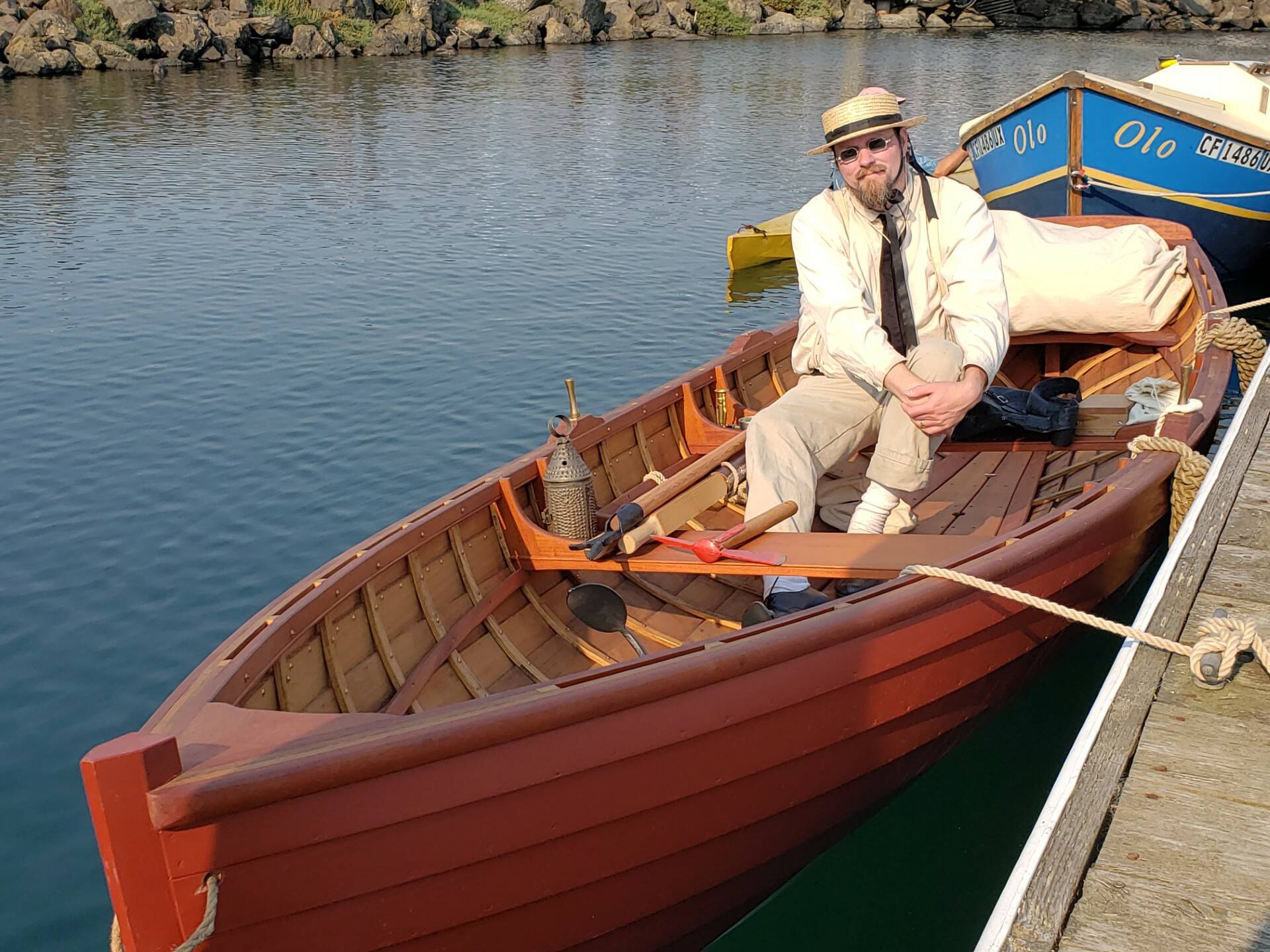Michael Buse, a history teacher in Olympia, grew up playing pirate, looking for treasure in the Stillaguamish River in his hometown of Stanwood. In eighth grade, he became fascinated with Zachary Taylor, the 12th president of the United States, who served from 1849 to 1850. Little was known about Western Washington during that time, his teacher told him.
After decades of study, Buse found that his teacher was very wrong. Many non-indigenous American voyagers sailed through Puget Sound, including an American fur trading vessel that moored on Whidbey Island in 1803, two years before Lewis and Clark made it to the mouth of the Columbia River.
In an article in the Northwest Quarterly, Buse explains how the U.S. military used steam-powered engines to aid in combat and transportation by way of a ship called the USS Massachusetts. Not only did this ship reach the Salish Sea during Taylor’s presidency, but the military sent a detachment from Penn Cove that explored the Stillaguamish River.
“They went up the river in the funny, blue uniforms with the puffy hats,” Buse said. “They went up the river looking for coal and lead. They basically went up the river looking for treasure.”
After researching the first American steamship on Puget Sound, Buse began to wonder — what was the first of any American ships on Puget Sound? “I was amazed with what I unearthed,” he said.
Buse uses a mix of online repositories such as Google Books and the Library of Congress and physical repositories on the East Coast for materials that haven’t been digitized, he said.
In 1792, Robert Gray, an American merchant, and his crew entered the Strait of Juan de Fuca, but they did not sail all the way inland into Puget Sound. According to Buse, Gray was told by Native Americans that farther in there were no sea otter furs, the furs the American mariners wanted in the early years of the fur trade. On top of this, they told them, the area was riddled with strong currents and fickle winds.
An 1826 congressional document titled “Exploration of the Northwest Coast” quotes Major Alexander Brooks, who wrote about his visit to Puget Sound. His ship, called the Guatamozin (likely an alternative spelling of an Aztec ruler), was captained by a man named Bumpstead and, after Bumpstead died during the voyage, William Granville took over as captain.
H. Thompson, a member of Brooks’s crew, carved his name in a tree at the mouth of the Columbia River.
Brooks writes about the Guatamozin being damaged and needing hardwood to make repairs, which was scarce on the coast, so the crew decided to brave the elements of the Salish Sea that indigenous people had warned about. There, they found Penn Cove and later the abundant Garry oak of Oak Harbor.
The Guatamozin spent September and part of October 1803 on Whidbey being repaired, which Buse believes is the longest running non-indigenous settlement on the Salish Sea until Fort Nisqually in 1832.
Brooks wrote about abandoned native villages and very few native people, which could have been from smallpox, Buse said, but it’s also possible that the tribes were elsewhere for the season and would return as it became colder.
Brooks’s testimony to congress about this journey, Buse argues, also had an influence in the United States eventually claiming Western Washington.
Buse is shocked by how little of these early American explorers is commonly known.
“Why the history of Americans coming here early has been neglected by historians of this area, I mean, it’s a complete mystery to me,” he said.
A lot of what rises to the top of historical record likely has to do with documentation and politics, he said.
“When the history of non-indigenous people on the Salish Sea is told, it’s like, ‘Vancouver, Vancouver, Vancouver, Vancouver, a little more Vancouver. Oh, and did I mention Captain George Vancouver?’” he said. “Right. Well, in all fairness, the Vancouver expedition was very, very well documented.”
Vancouver took meticulous records, and many aboard his crew preserved personal journals. Yet Vancouver was a competitor to the United States, and the Spanish had visited the area prior to Vancouver.
Historical documents are scattered and obscure, and the internet has made this kind of research much easier, Buse said.
“I’m a living history interpreter and so there’s a part of me that’s a Luddite that isn’t a huge fan of technology,” he said. “There’s a part of me that loves historical technology, but even I have to admit, it would have been very difficult to put all this together without the Internet.”
Sometimes, meticulous notes aren’t enough to stand out in the historical record, he said. The Wilkes Expedition of 1838-1842, in terms of money, fleet, manpower and scientific knowledge, dwarfed Lewis and Clark, but it’s much less known.
Navy Lt. Charles Wilkes didn’t just write a journal, he wrote a five-volume narrative, Buse said. What gets swept under the rug is often likely political.
“The solution I think to really understanding the rich early history of this area is not to deemphasize one group,” Buse said, “but rather bring others up and say, ‘Oh, wait a minute, this is some really interesting stuff that happened that hasn’t been well documented.’”
Buse will give a living history presentation with the Island County Historical Society in Coupeville on Aug. 17 on a nineteenth century replica he built of a smaller boat that would have been carried by a larger, ocean-going ship. Buse will give another history presentation on the Schooner Suva on Aug. 18 at 1 p.m. For more information, visit islandhistory.org.


